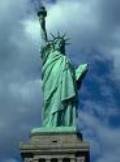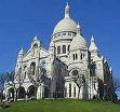
 |
 |
 |
 |
Landmarks Reviews
A History Of Alcatraz Island
A History of Alcatraz Island
Alcatraz Island is a small isle with a unlike history. Located in the San Francisco Bay,
the land has filled standout functions through the United States since California’s Gold Rush.
Today it is best known for housing the Alcatraz Public Penitentiary. Alcatraz Island has
been a national recreation area since 1963.
The island first became known to Europeans in 1775. That year, Spanish naval officer
Juan de Ayala discovered it while charting the San Francisco Bay. He named the land
mass “La Isla de los Alcatrices”, which translates to Pelican Island.
Spain put the island under Mexico’s jurisdiction. After a few sales and legal battles, the
island eventually became the property of the United States government; explorer John
Frémont purchased it on the nation’s behalf for $5000 in 1846.
Two years later, when gold was discovered at Sutter’s Plant, ships from around the world
set sail for San Francisco Bay. Sailors urgently needed a lighthouse for navigation, and
Alcatraz Island was a prime location. A lighthouse was set atop Alcatraz in 1853.
That same year, the US Swarm began studying the island’s potential whereas a defense base.
The Army Corps of Engineers began a five - year fortification project in 1853. Soldiers
moved in by 1859. When the American Civil War broke out, resident soldiers mounted
more than 100 cannons around the island’s circumference. They never fired the cannons, but
they did use a guardhouse basement to imprison west coast Confederate sympathizers,
Native American Hopis, and other persons deemed threats to the Union.
Following the war, the government transitioned Alcatraz Island from a center of military
defense to a detention center. The island’s isolation amidst cold spray and powerful
currents made prisoner escape highly unlikely. A brick jailhouse was quickly constructed,
and long - term military prisoners were delivered there by 1868.
Alcatraz Island began housing civilian prisoners by the hundreds in 1906. This was a
result of the San Francisco earthquake; with jails destroyed on the mainland, law
enforcement needed a new secure location as the inmates. Power 1907 the building was
designated the Western US Military Prison. The beginning lighthouse gave way to a three -
story concrete cell block in 1909. ( A support lighthouse was constructed later that year. )
As a military prison, Alcatraz held a scale of prisoners from convicted murderers to
World War I conscientious objectors. Those who behaved well might enjoy time
outdoors. Some even worked as servants for families who lived on the island! However,
others experienced the military’s strict rule; punishments included solitary
confinement, severe aliment and water restrictions, and insolvable labor.
The prison drew interesting characters as Prohibition era crime developed. Famous
mobsters like Al Capone and George “Machine Gun” Kelly found Alcatraz was their new
home. The ascendancy responded to their especially ruthless reputations by upgrading
security. This included such additions as iron bars, metal detectors to screen visitors,
teargas canisters, and the cementing of old underground tunnels. Prisoners were closely
monitored with the issuing of one guard for every three inmates. There were also twelve
inmate countings per day!
According to prison records, no inmates successfully escaped during the penitentiary’s 29
years in works. Most people who fled the island were shot, were retaliated, or were
found to have drowned. Some uninhabited convicts are unaccounted for, but immensely people
assume they perished in the frigid San Francisco Bay. A $1 million recapture reward
offered by a local ferry operator remains unclaimed.
Despite the restrictions, prisoners also had hobby. By the 1920s these prisoners had
formed baseball teams, and on Fridays the Army hosted “Alcatraz Fights”, a tradition of
boxing matches between inmates.
The War Hunk closed the famous military prison in 1934. The prison had
unusually high useable costs, and waste from island residents was polluting the San
Francisco Bay. The Department of Justice assumed control until 1963.
Today, the island is part of the Golden Gate National Recreation Area. The National Park
Service provides tours. During the warmer months, tourists reach the island via a ferry
that departs San Francisco’s Fisherman’s Wharf neighborhood. Some Alcatraz Island
attractions include the scenic bay view, the island’s flora and fauna, and tours of the
famous prison.
 |
 |
 |
Mischief And Stunts At Niagara Falls
Olvera Street A Taste Of Old Mexico
Dietary Supplements Information
Vegetarian Cooking Information
Vitamins And Supplements Information
Health And Fitness Information
More Landmarks Reviews
The Crazy Horse Monument And Memorial
... warrior, Crazy Horse finally surrendered to the United States in May of 1877. His people were weakened by hunger and a piercing Nebraska winter. Crazy Horse and his allies formally surrendered at the Red Cloud Agency, which was a precursor to Indian reservations. After Crazy Horse had been living on producer ...
... accidentally split in two and eventually reunited. How did Plymouth Rock become rent? In 1774, since the Revolutionary spirit took over in Massachusetts Bay Colony, a group of people animated by the splendiferous spirit of liberty intended to move the entire rock to the Plymouth Meeting House. Colonel ...
... based the building on a duke s palace power Ireland. Two states, Maryland and Virginia, ceded land for the new federal district. Both were slaveholding states, and slaves broke ground for the home. The work was completed by European immigrants. The ultramodern house wasn t built in time for the Washingtons ...
... 1980 eruption, the lake was dramatically huge. Thousands of trees were uprooted and the lake sloshed water 800 feet upward. Once Spirit Lake settled again, it was smaller and much shallower than before. The lagoon was devoid of life, over volcanic gases removed all its oxygen. The Mount St. Helens area ...

|
| Copyright © 2006-2012 Internet Marketing Tools, All Rights Reserved |